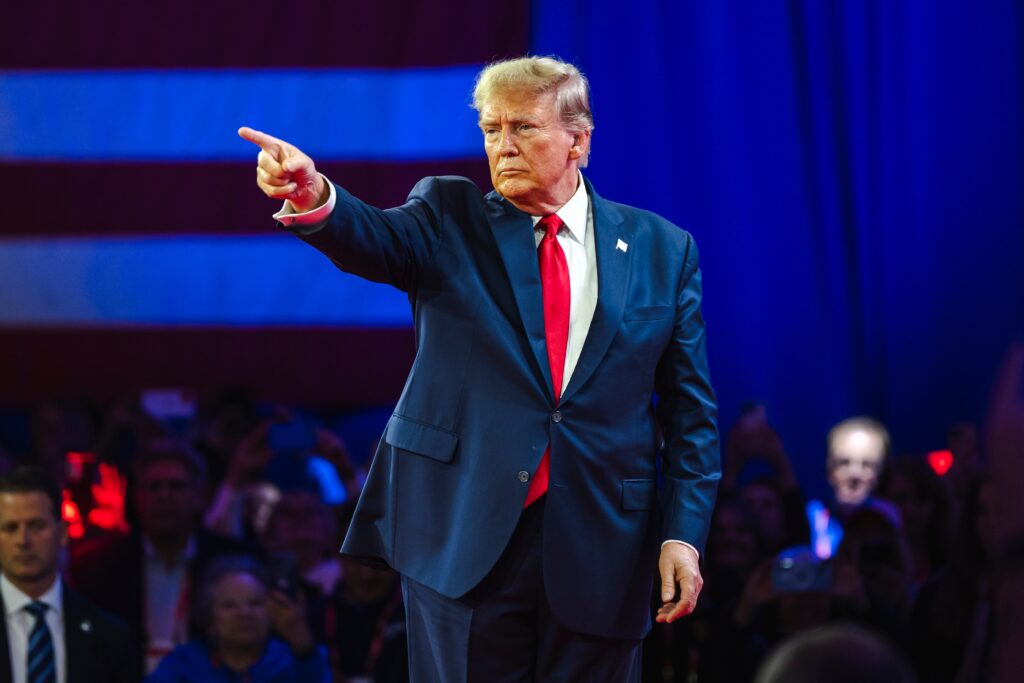In a bold return from a four-day trip across the Gulf, former U.S. President Donald Trump declared the mission “historic.” Speaking to reporters aboard his flight back, Trump said the visit would bring more than $2 trillion in investments and jobs to the United States. He toured Saudi Arabia, Qatar, and the United Arab Emirates (UAE), calling the reception “unmatched” and the deals “a turning point for American workers.”
Trump received royal welcomes in each country—camel parades, air force escorts, and even Tesla Cybertrucks. He was also awarded the Order of Zayed, the UAE’s highest civilian honor, for what officials called a “new economic era.”
Promises of Trillions—But What’s Real?
Trump emphasized that Gulf leaders pledged “never-before-seen investments” in U.S. businesses. Saudi Arabia promised $600 billion, aimed at sectors like defense, health, artificial intelligence, and science.
A standout moment was a $142 billion arms deal, which Trump said would support thousands of American jobs. Yet, analysts remain cautious. Former IMF official Tim Callen warned that only delivered outcomes—not headlines—will determine success. “We’ve heard big numbers before,” Callen said, “but only results matter.”
This echoes Trump’s past claims. In 2017, he announced $450 billion in deals with Saudi Arabia. But U.S.-Saudi trade from 2017 to 2020 fell short, staying under $300 billion.
Qatar and UAE Announce Deals, But Doubts Remain
In Qatar, Trump cited a $1.2 trillion economic exchange, but the White House only confirmed $243.5 billion in actual agreements. The most notable: Qatar Airways ordering 210 Boeing planes for $96 billion, estimated to support 154,000 U.S. jobs annually.
The UAE pledged to build the world’s largest AI campus outside the U.S. The project involves buying 500,000 Nvidia chips and aims to fuel tech growth. UAE leaders also committed to investing $1.4 trillion in the U.S. over the next 10 years.
But a slump in oil prices could affect the Gulf’s spending ability. April saw oil fall to a four-year low, partly due to Trump’s tariffs and increased Opec+ production. Saudi Arabia, facing budget gaps, may need to borrow or cut spending. The IMF has already lowered the kingdom’s 2025 growth forecast from 3.3% to 3%.
Loosely Defined Agreements Raise Eyebrows
Critics noted that many “deals” were non-binding memorandums of understanding. Some had even been previously announced. For example, Aramco’s LNG deal with NextDecade resurfaced, though it was signed months ago.
In total, Aramco listed 34 partnerships with U.S. firms worth $90 billion. Most of them, however, lacked specific financial commitments or timelines.
A New Focus: AI and Tech Over Oil
Despite the concerns, the visit shows a shift in U.S.-Gulf ties—from oil security to tech-driven partnerships. Trump traveled with key tech figures, including OpenAI CEO Sam Altman, Nvidia CEO Jensen Huang, and Elon Musk, who owns Grok AI.
Just before the trip, the White House lifted export restrictions on advanced U.S. semiconductors. These chips are key to AI development, and the move gives Gulf states better access. It also strengthens tech alliances, as the UAE and Saudi Arabia aim to lead in AI innovation.
Bader Al Saif, a Gulf analyst at Kuwait University, said the change is major. “This is no longer just about oil,” he noted. “It’s about technology shaping the future.”
Gulf Nations Turn to U.S. for Digital Growth
The UAE is investing heavily in AI data centers, aiming to become a global leader. It is also reducing ties with Chinese tech firms in favor of U.S. companies. Al Saif described this as “a clear bet on American leadership in AI.”
Saudi Arabia is following a similar path. Both nations view tech as a way to future-proof their economies and build influence on the global stage.
Trump framed the tour as a major success for both sides. He said the trip would revive U.S. industry, strengthen alliances, and support his message of economic nationalism.
“These deals,” he told reporters, “will change everything.” He also joked about credit, saying, “One day, when the money flows in, I’ll be sitting at home saying, ‘I did that.’”
While experts call for caution and await actual follow-through, the trip has already reshaped political and economic headlines—with Trump, once again, at the center.
